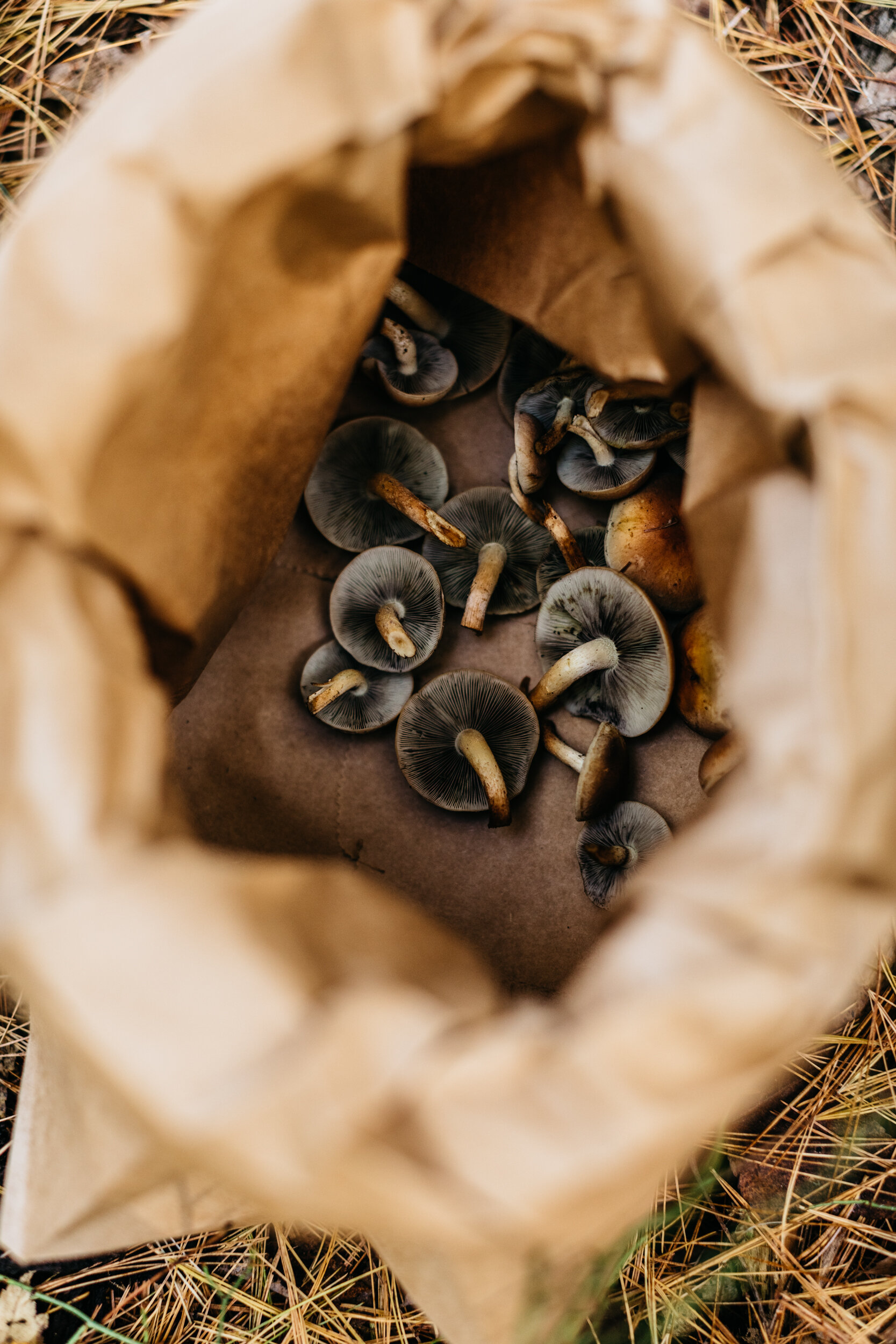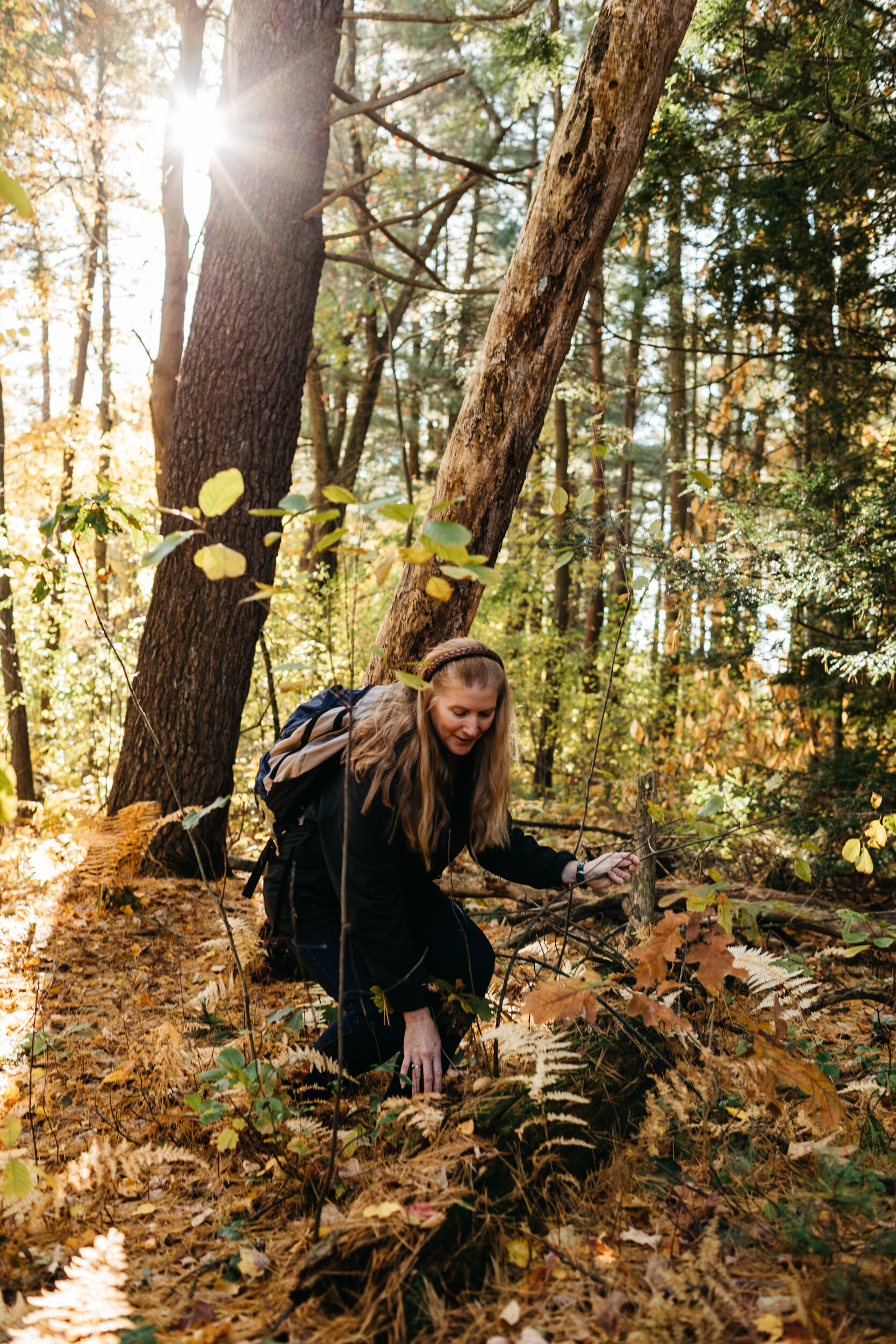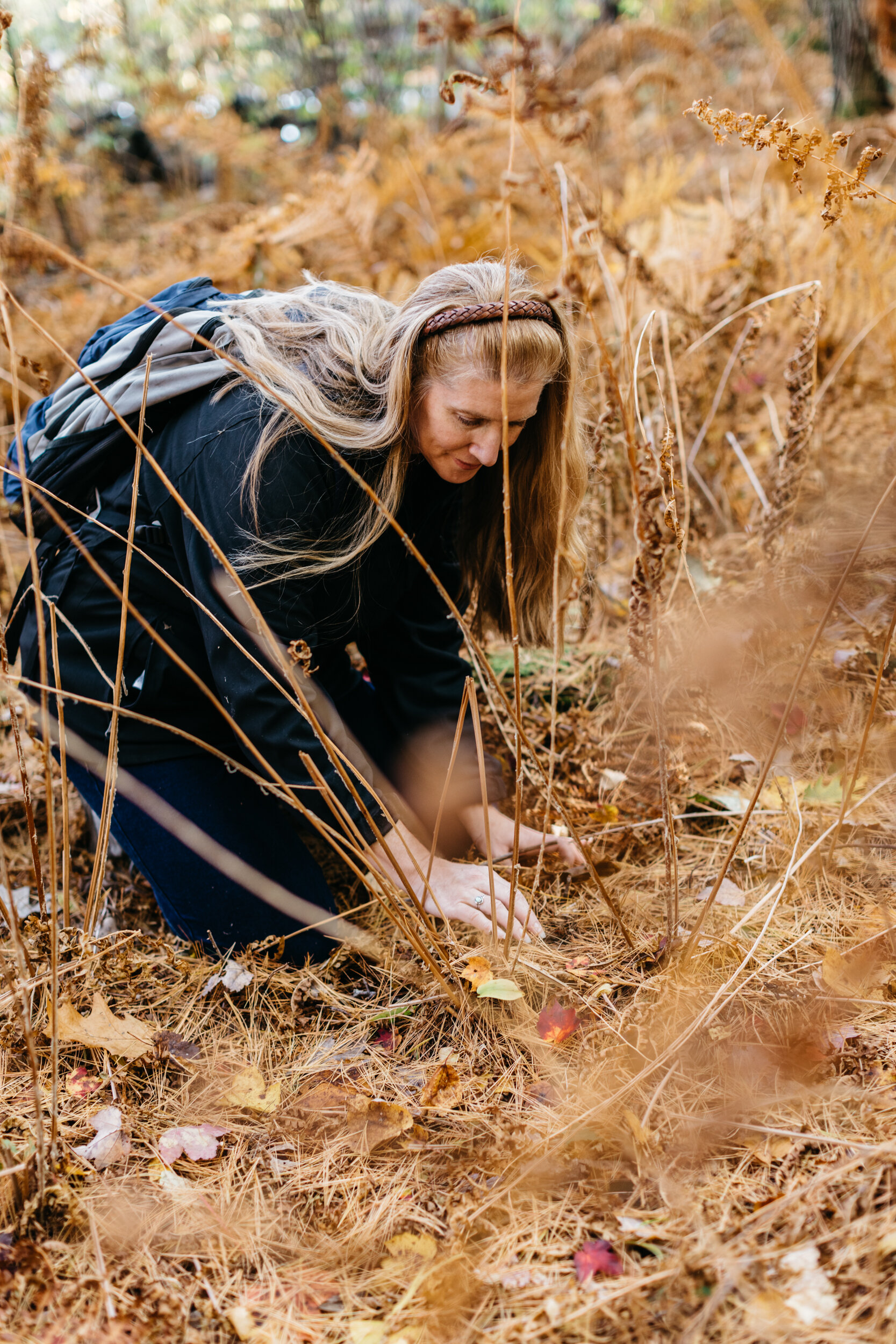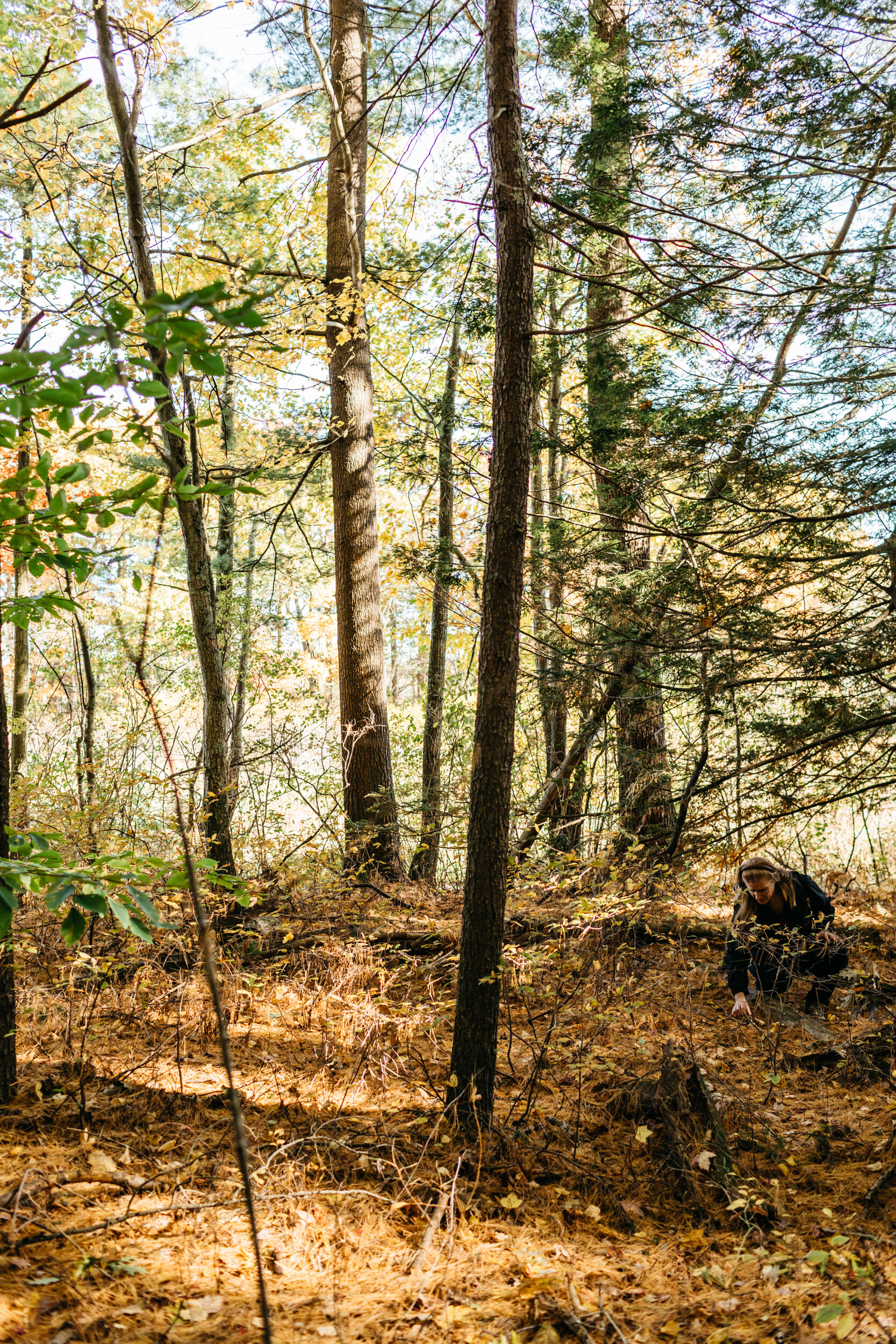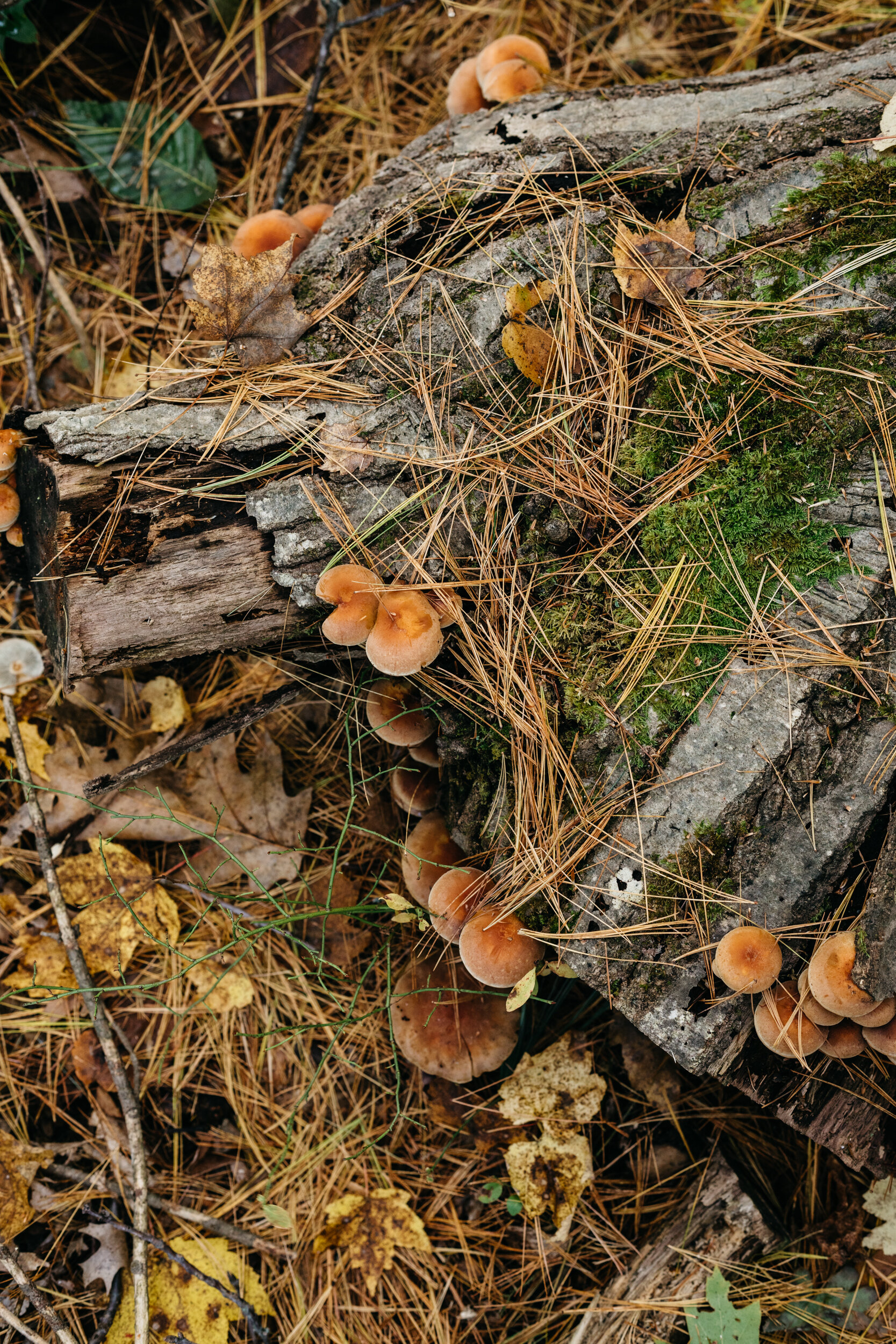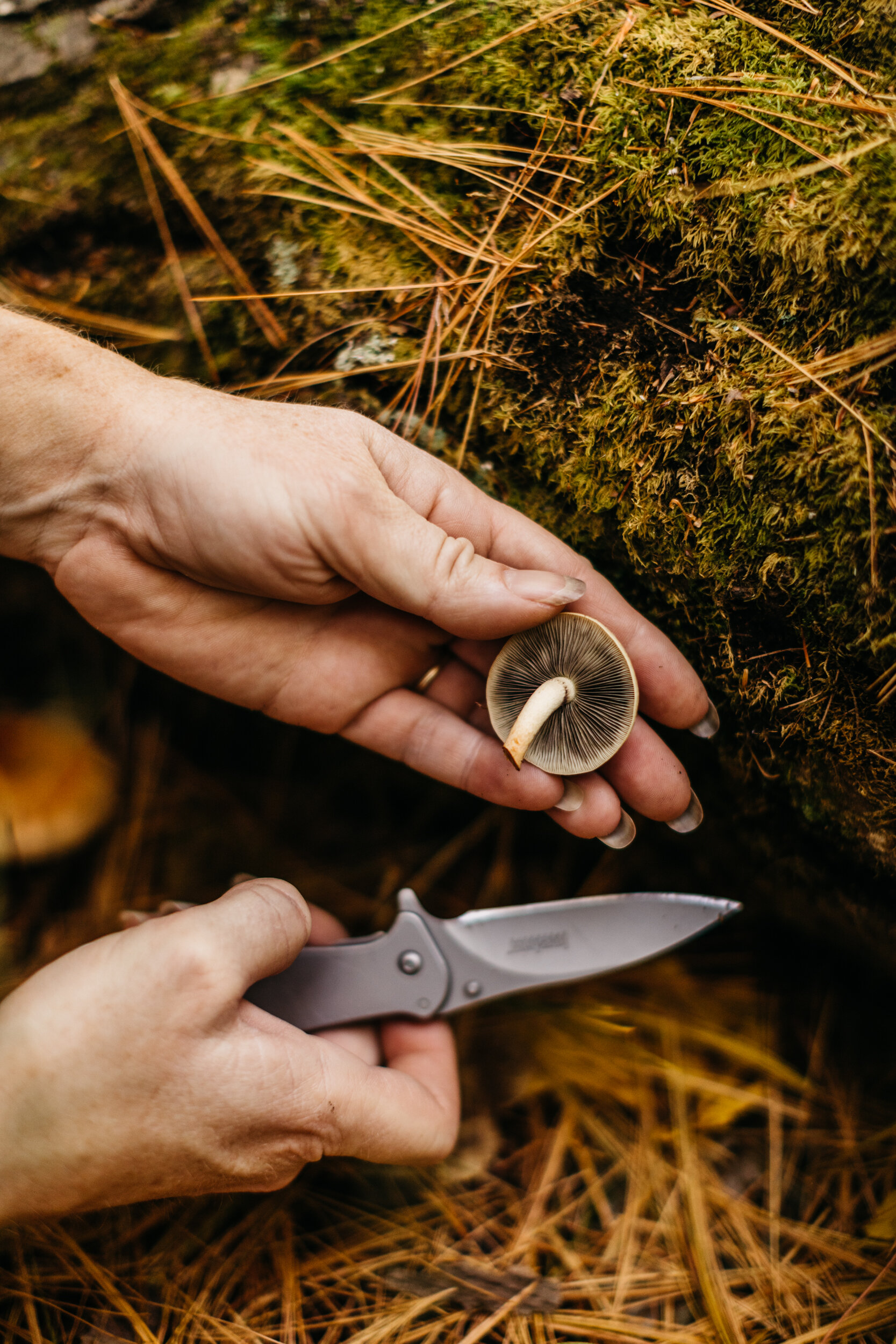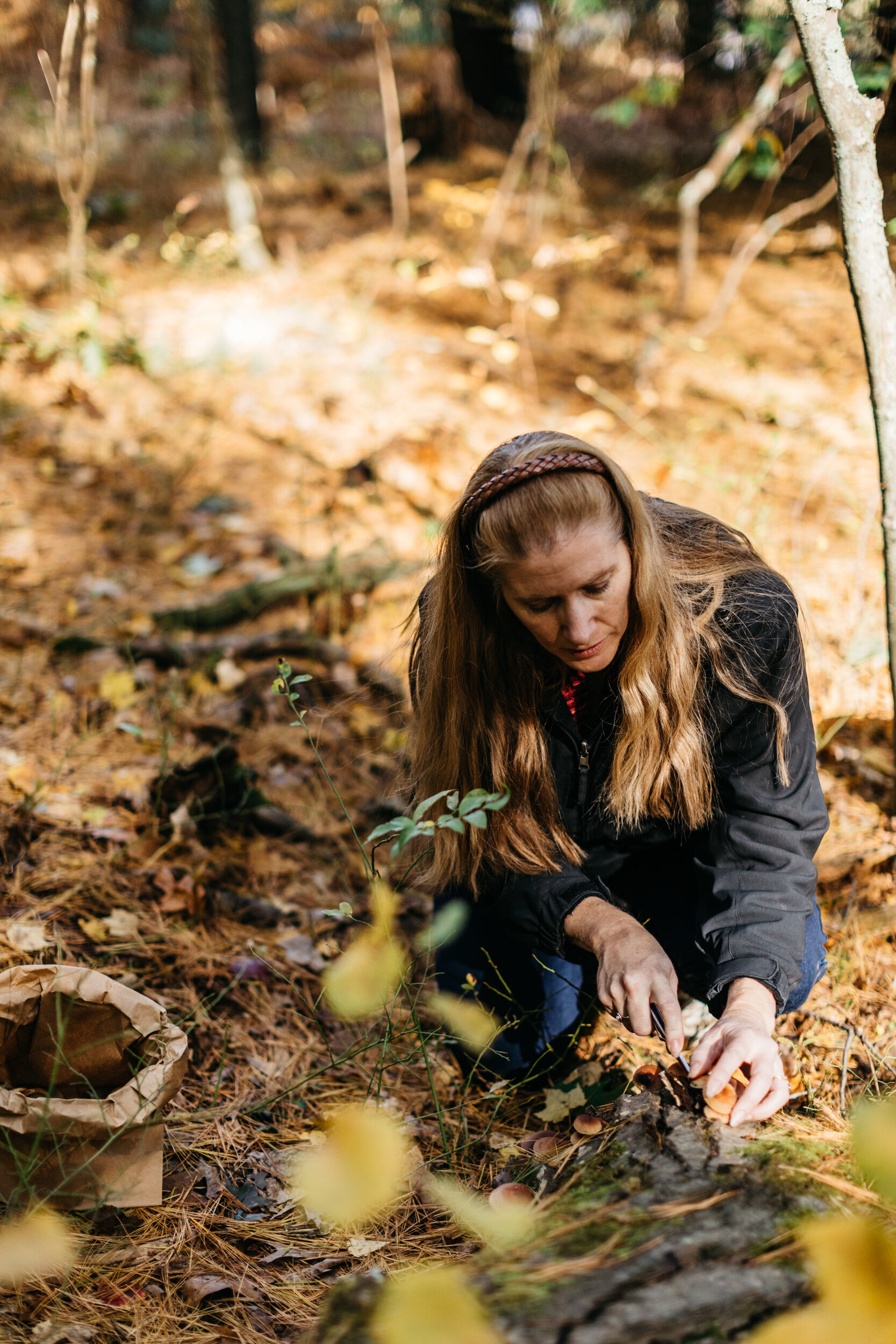Wild Bounty: Foraging with Mrs. G
Photos by Michael Piazza
For Millbury resident Rachel Goclawski, there are two kinds of mushroom people: those so afraid of accidental poisoning that they’d never consider eating a mushroom they found in the forest, and those daring enough to gather and eat wild mushrooms regularly, with nothing but a YouTube video as their guide.
“I want you to rest somewhere in the middle of those two extremes,” she tells students in her fall Introduction to Mushrooming workshop, held in Sutton.
Goclawski is a naturalist, a state-certified educator and an avid forager of wild foods. She shares her expertise throughout the region at community events, fairs and in small private classes. Annual offerings include a variety of mushrooming workshops—Wild Herbal Tea Making, Japanese Knotweed Pickling, Maple Sugaring, Finding Deer Antlers (they make great natural dog treats, apparently) and foraging sessions matched to each season’s wild bounty. There’s food to be had in the meadows and forests of Central Massachusetts, and if you’re interested in finding it, Goclawski—or Mrs. G., as she’s known online—can help.
“Mushrooms are an awesome source of food and medicine,” she tells the crowd of 30 would-be foragers in Sutton, “but you have to do your research.”
Then she tells them there are three general classes of mushrooms, each named for the type of tissue found under their cap: Gilled mushrooms have thin flaps of skin arranged in parallel, tootled mushrooms have fleshy projections that point to the ground and polypore mushrooms sport a spongy material that’s peppered with indentations, or pores. Goclawski passes specimens of all three types around the classroom so students can have a good look. Then she focuses the group’s attention on two classic polypore mushrooms: Hen of the Woods (Grifola frondosa, also called maitake) and Chicken of the Woods (Laetiporus sulphureus, or Sulphur Shelf). Known colloquially as hens and chickens, both grow as mounds of petal-like fronds at the base of hardwood trees. Where hen fronds are thinnish and striped gray and white, chicken fronds are thicker and bright orange in color. Hens and chickens are easy to identify—Goclawski points out all the identifying features—delightful to eat and abundant in northeastern forests in the fall. The trait that makes them the perfect mushrooms for beginners, though, is that neither has a poisonous look-alike. If beginners stick to foraging for chickens and hens, Goclawski says, they cannot make a fatal mistake.
Goclawski grew up in Watertown, where her maternal grandmother helped her learn the names of trees and plants in their neighborhood. The pair spent a lot of time on Cape Cod, too, and that’s where the older woman taught the younger one how to mine the natural world for leaves, fruit, bark and roots that could be eaten or used as medicine. Goclawski’s grammy never taught her about mushrooms, though. F “I think she had that fear of mushrooms so many people have,” Goclawski says.
But recently, at a family funeral, Goclawski learned that her great-grandfather, Grammy’s father, was an avid mushroom hunter who helped found the Boston Mycological Club. This connection between her heritage and her calling is thrilling, Goclawski says, and it further feeds her desire to teach friends, neighbors and interested strangers how to find and utilize both wild plants and mushrooms.
She doesn’t do it alone. Lily and Kristen, Goclawski’s young daughters, make regular appearances on the Cooking with Mrs. G social media pages, sometimes grinding dried herbs to make a tea for a sick teacher, other times picking ladybugs out of a harvest of wild autumn olive. Their father, Tadeusz, regularly transforms his wife’s foraged foods into fungi-forward family meals, like Hen of the Woods gnocchi and Quiche Lorraine with Black Trumpet mushrooms, or root specialties like Wood Sunflower French Fries. Anyone can join Goclawski’s band of wild food aficionados, partaking of regular online updates on what’s fruiting where, how to harvest it and what to do with it once you have. And for the truly inspired, Goclawski is happy to provide hands-on guidance through classes and workshops.
When beginner mushrooming students have mastered the field characteristics of hens and chickens, Goclawski likes to get them outside to hunt in the wild. This time she leads her Sutton class, caravan-style, to nearby Waters Farm, where they’ll forage in an intact forest of mature hardwood trees. When the entire class has assembled at a trailhead on the property, Goclawski directs all eyes to a shady spot between two outbuildings, a place where she’d found a flush of Shaggy Mane mushrooms last year. There’s nothing to see there now, though, and Goclawski uses this as a teaching moment: Foraging mushrooms is not for the impatient. Sometimes mushrooms fruit in the same spots year after year, and sometimes they don’t. Sometimes they show up in exactly the places you’d expect them to at exactly the time they should, and other times the rain, or lack of rain, or wind, or lack of wind, or a whole host of other hardto- control conditions will frustrate the would-be forager. Mushrooms are fickle. Mushroomers have to be persistent.
Leading students down the trail, Goclawski reminds them to watch for ticks and for poison ivy. She suggests painting a mental map of their environment and reminds them to bring paper maps when they forage on their own. Eventually, good advice dispensed, she turns and steps off the trail. The class follows her.
Immediately people begin spotting mushrooms. Not chickens or hens, but lovely specimens with names like Studded Puffball, Old Man of the Woods, Inky Cap, Coral and Blewit. After 30 minutes of regular stops to kneel and identify mushrooms, one sharp-eyed student presents Goclawski with a Chicken of the Woods mushroom. Sadly, its orange-tinted fronds are thin and mushy, a sign themushroom is past its eating prime. By the end of the hour, no one’s found a single edible polypore. Still, as the group heads back to the trail, talking about mushrooms and mushroom habitats and where they might hunt next, spirits are high. That’s when someone steps on a wasp nest.
Chaos ensues. The group splinters, a few students sprinting ahead toward the trail and others circling back to consult their teacher. Goclawski, calm and confident, gathers the stragglers and leads them in a wide loop around the nest, stepping carefully, watching for signs of more stinging insects. As they reach the edge of the woodsy path that leads back to the barn, Goclawski’s eyes stay on the ground. She’s not looking for insects now, though, or even for mushrooms. Soon she kneels beside what she’s been looking for, a nondescript, low-growing plant called plantain. She pinches off several of its broad, oval, deeply veined leaves and explains to the group that this common weed, applied as a poultice—leaves torn and moistened to form a wet bandage—soothes the pain and itch of insect stings. Then Goclawski jogs down the trail to dispense her medicine to those who need it.
Goclawski’s locally foraged, handmade foods, teas, tinctures, lotions and salves can be purchased online at her Etsy shop. For up-to-the-week wild foraging tips, recipes, class announcements and event listings, visit her Facebook and Instagram pages by searching “Cooking with Mrs. G.”
etsy.com/shop/cookingwithmrsg
This story appeared in the Winter 2020 issue of Edible Worcester.



